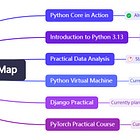EM Clustering (Part 2): Using the EM Algorithm to Classify Honor of Kings Heroes(Practical Data Analysis 23)
Learn how to apply the EM algorithm for clustering 'Honor of Kings' hero data using GMM. Explore key concepts, tools, and practical coding examples in Python.
Welcome to the "Practical Data Analysis" Series.
Today, I will guide you through the practical application of the EM algorithm. In the previous lesson, I explained the principle of the EM algorithm. The EM algorithm is essentially a clustering framework with different clustering models inside, such as the GMM (Gaussian Mixture Model) or HMM (Hidden Markov Model).
What you need to understand are the two steps of the EM algorithm: the E-step and the M-step. The E-step is about estimating the hidden variables using the initialized parameters, while the M-step involves optimizing the parameters by using the hidden variables.
Finally, through the iteration of the EM steps, we obtain the final model parameters.
Today, we will perform a hands-on practice of the EM algorithm. The key points you need to think about are:
How do we use the EM algorithm tool to complete clustering?
In which scenarios should you use clustering algorithms? What is the goal of using clustering algorithms?
How can the EM algorithm help us analyze data on heroes from the game "Honor of Kings"?
How to Use the EM Toolkit
In Python, there is a third-party EM algorithm toolkit. Since the EM algorithm is a clustering framework, you need to clearly specify which specific algorithm to use, such as the GMM (Gaussian Mixture Model) or the HMM (Hidden Markov Model).



